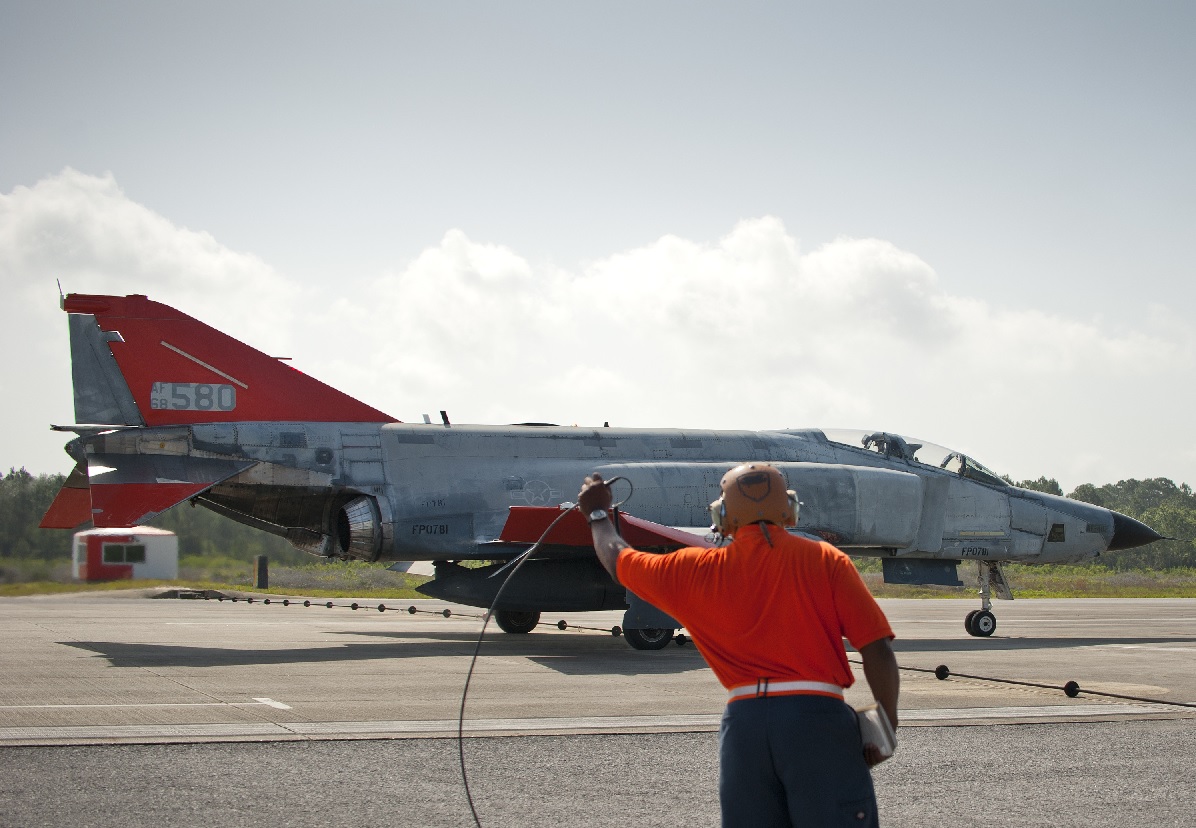The QF-4, a modified F-4, was selected as the QF-106’s successor in the Air Force aerial target arsenal.
Hill Air Force Base (AFB) had a bittersweet day on Oct. 25, 2016.
Two of the aircraft visited the airfield on that day, as the QF-4 Aerial Target mission was winding down, to offer fans of the F-4 Phantom IIs one last chance to view them.
The ‘Phinal Phantom Phlight,’ hosted by the Air Force Life Cycle Management Center’s F/QF-4 System Program Office, was dubbed the ‘Phinal Phantom Phlight.’

After performing two flybys, Lt. Col. Ron King and Jim Harkins, pilots from Holloman AFB in New Mexico, landed at Hill AFB, where they were greeted by Airmen and civilians.
“I felt like we had an opportunity and an obligation to get this aircraft on the road one more time because so many people have this connection with it,” King explained. “It’s just been absolutely amazing for me to do this.”
QF-4s are modified F-4s that are employed in full-scale aerial target missions (FSAT), which provide aerial targets for all Defense Department weapon systems. QF-4s were frequently shot at and destroyed during live-fire test and evaluation flights during the Air Combat Command’s Weapon System Evaluation Program when flown in threat representative configuration.

The F-4 Phantom II, which made its first flight in May 1958 and entered service in 1961, was initially designed for US Navy fleet defense. The F-110A Spectre was studied by the United States Air Force (USAF) for close air support (CAS), interdiction, and counter-air operations. The USAF version was approved in 1962. The Air Force Phantom II was first flown on May 27, 1963, and deliveries began in November of that year.
Throughout the 1960s and 1970s, the F-4 was the premier fighter-bomber aircraft of the United States Air Force. In addition, Phantom II excelled in surveillance and anti-aircraft missile suppression operations known as “Wild Weasel.” And it was produced until 1979.
The QF-4, a modified F-4, was selected as the QF-106’s successor in the Air Force aerial target arsenal.
After the 309th Aerospace Maintenance and Regeneration Group (309 AMARG) at Davis-Monthan AFB, Arizona, began regenerating F-4s in the 1990s, the QF-4 program was established.

The program’s lifetime is currently in the ‘sundown’ phase. All remaining QF-4s were transported to Holloman AFB in May 2015 for final operations. On Aug. 17, 2016, the last unmanned mission in a threat representative configuration was flown, and unmanned operations stopped in September, while the final human QF-4 flight was scheduled for Dec. 21.
A total of 13 QF-4s are currently stationed at Holloman AFB. Those still alive at the end of the exercise will have their engines and hazardous items removed before being hauled to the White Sands Missile Range to be used as ground targets.
In the FSAT mission, the QF-16 will take the place of the QF-4.
It was not uncommon for these ‘unmanned’ aircraft to be flown by pilots during the program. “The majority of QF-4 missions are flown in the manned configuration to support manned presentations (validation tests of nonlethal weapon system components), unmanned flight chase missions, and pilot proficiency training,” according to Scott Johnson, the Air Force Life Cycle Management Center F-4 system program manager.
He also mentioned that before becoming operational, each QF-4 had to be checked out by a person, “One of the checks was to fly the aircraft with a pilot in the cockpit while it was controlled from the ground station in what’s called a ‘manned-coupled mission.’ It then became part of the local QF-4 fleet and remained in a manned configuration until it was needed for an unmanned flight to support an FSAT mission.”

Source: Paul Holcomb, 75th Air Base Wing Public Affairs and U.S. Air Force; Photo by Airman 1st Class Emily A. Kenney, Tech. Sgt. Javier Cruz and Sara Vidoni / U.S. Air Force

